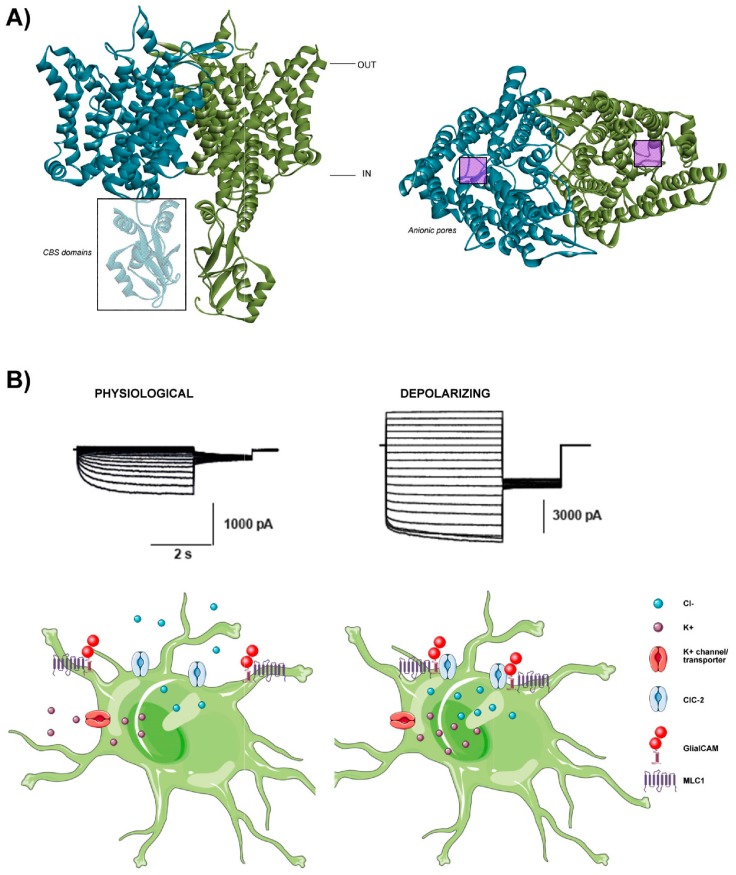Figure 1.
The chloride channel ClC-2. (A) The structural configuration of a CLC chloride channel. (Left) Lateral view of the dimeric form of the channel, which is comprised of two subunits distinguished by different colours. The intracellular cystathionine-β-synthase (CBS) domains are also highlighted in the unshaded box. (Right) Frontal view of the dimeric channel, where the two pores are highlighted in the purple boxes. Figures generated using the PDB model 5TQQ from human ClC-1, which has high homology to the ClC-2 channel. (B) Proposed model for depolarizing-mediated ClC-2 activation by MLC1/GlialCAM in astrocytes. In basal conditions, ClC-2 displays outwardly rectifying currents, promoting Cl− efflux (left). Upon depolarization and the consequent entrance of K+ into the cell, the MLC1/GlialCAM complex binds to ClC-2, allowing GlialCAM to modify ClC-2-mediated currents, generating a Cl− influx into the cell that may compensate the excess of K+ (right).

